Japan's Mountains: 15 Famous Peaks and Climbing Tips

Mount Fuji may be the most iconic peak in Japan but there are many other mountains with impressive scenery. We introduce 15 of the Hyakumeizan (the "100 Famous Mountains of Japan"), including Mt. Takao and Mt. Mitake in Tokyo, along with climbing tips for outdoor enthusiasts.
Enjoy Climbing and Outdoor Activities on Japan's Famous Mountains
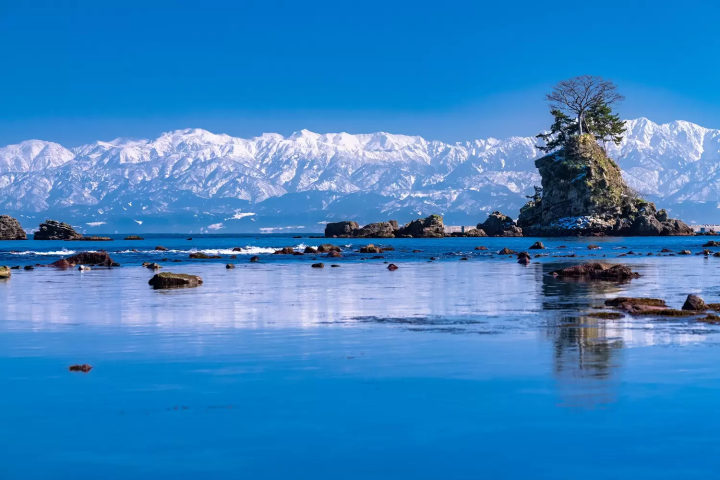
The Tateyama mountain range in Toyama. Photo by Pixta
You may have heard about the "100 Famous Mountains of Japan" (Hyakumeizan), or maybe even tried to climb as many of them as possible.
In this article, we introduce 15 of Japan's famous mountains, including some that are easy to access from Tokyo, providing information for those who consider climbing these peaks.
Japan's Famous Mountains
The 100 Famous Mountains of Japan: Criteria for Selection
7 Notable Mountains Near Tokyo
1. Mt. Takao
2. Mt. Mitake
3. Mt. Nantai
4. Mt. Hotaka
5. Mt. Nokogiri
6. Mt. Tsukuba
7. Mt. Kinpu
The Highest and Most Famous Mountains in Japan
8. Mt. Fuji
9. Mt. Haku
10. Mt. Tate
11. Mt. Asahidake
12. Mt. Yotei
13. Dewa Sanzan
14. Mt. Aso
15. Mt. Daisen
Read also
The 100 Famous Mountains of Japan: Criteria for Selection
The "100 Famous Mountains of Japan" refers to the one hundred peaks in the "Hyakumeizan," written by the novelist and mountaineer Kyuya Fukada.
The mountains selected by Fukada are chosen from those he personally climbed, primarily consisting of peaks over 1,500 meters in elevation. The selection criteria are based on Fukada's subjective judgment, founded on the following three conditions:
1. Quality of the Mountain: It should be a beautiful mountain that everyone admires.
2. Historical Significance: It should have a long-standing historical relationship with people.
3. Unique Characteristics: It should possess distinctive features, such as shape, traditions, or natural phenomena.
The "100 Famous Mountains of Japan" selected based on these criteria are cherished by climbers of all levels, from beginners to advanced. Even today, they enjoy immense popularity among domestic and international mountaineers as representative mountains of Japan.
7 Famous Mountains Near Tokyo
Many famous mountains near Tokyo can be enjoyed on a day trip. The following seven mountains each have unique charms and are beloved by many hiking enthusiasts.
1. Mt. Takao
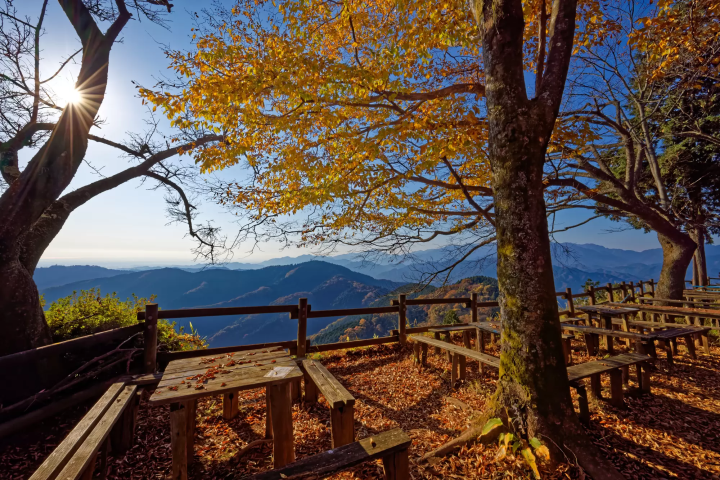
Photo by Pixta
With an elevation of 599.3 meters, Mt. Takao is located in Hachioji City, Tokyo, and has excellent access from the city center.
It is of a difficulty level that is easy enough for beginners, making it a great spot to enjoy nature without much effort. You can enjoy a spectacular view of Mt. Fuji from the summit on clear days.
There are various hiking courses to choose from before reaching the summit, including options to use a cable car or lift. There are also trails like Trail 4, which crosses a suspension bridge, and Trail 6, which allows you to enjoy waterfalls and rivers. You can enjoy hiking on a course that suits you best.
Read also
2. Mt. Mitake
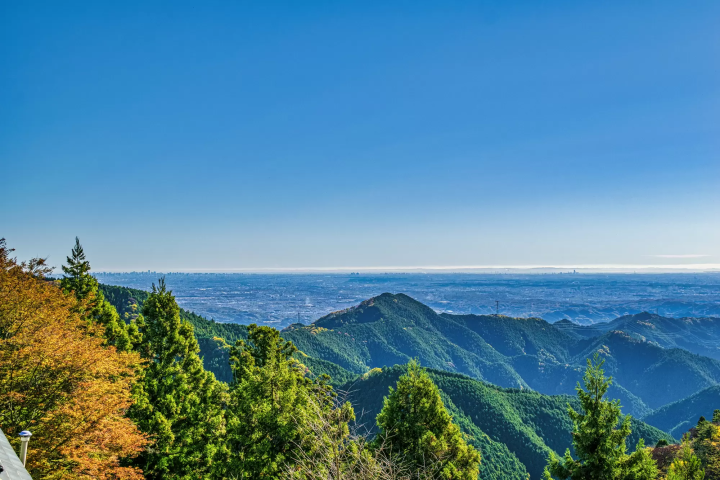
Photo by Pixta
Mt. Mitake, located in Ome City, Tokyo, is 929 meters high and is known for its rich nature and cultural heritage.
Although it is not one of the "100 Famous Mountains," the summit is home to the Musashi Mitake Shrine, which features several power spots, including the Ubayasu Shrine, famous for good relationships and safe childbirth, as well as Nanayo Falls.
With its history as a sacred mountain, it is recommended for those looking to receive healing and energy. Additionally, the mountain can be easily accessed via a cable car, making it a safe and enjoyable experience even for beginners.
Read also
3. Mt. Nantai
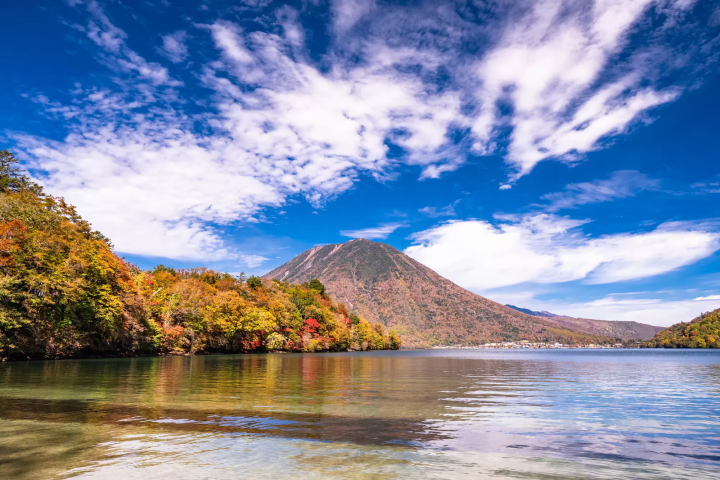
Photo by Pixta
Standing at an elevation of 2,486 meters in Nikko City, Tochigi Prefecture, Mt. Nantai is a spiritual peak located in Nikko National Park. The biggest attraction of climbing this mountain is the breathtaking view of Lake Chuzenji.
Night ascents are possible during the summer climbing festival, allowing climbers to experience a tradition that has been ongoing for over 1,200 years. The hiking course begins at Nikko Futarasan Chugushi Shrine and takes about four hours to reach the summit.
Due to the need for thorough preparation, it is recommended for intermediate climbers and above.
Read also
4. Mt. Hotaka
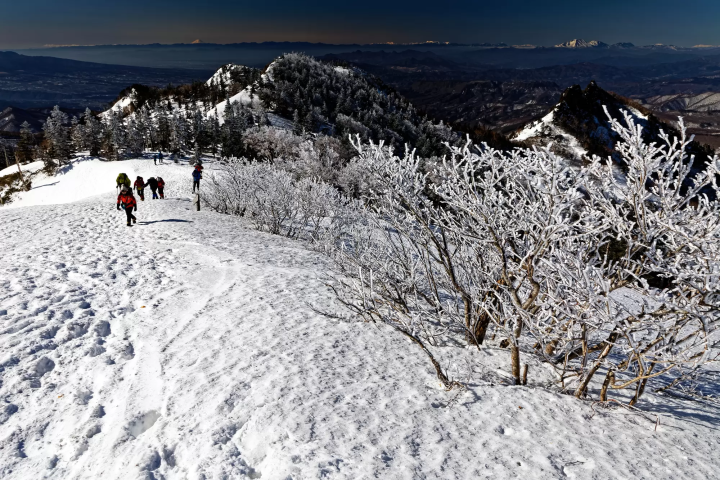
Photo by Pixta
Mt. Hotaka, which straddles Minakami Town, Kawaba Village, and Katashina Village in Gunma Prefecture, is 2,158 meters high. Near the summit, a statue of Yamato Takeru stands, blending history and nature.
One of the reasons to climb this mountain is that regardless of which trail you choose from the four that lead up, you will be greeted with breathtaking views of the surrounding mountains.
The climb takes a full day and is suitable for intermediate climbers and above. However, the sense of achievement and beautiful scenery make it worth experiencing at least once in your lifetime!
Read also
5. Mt. Nokogiri
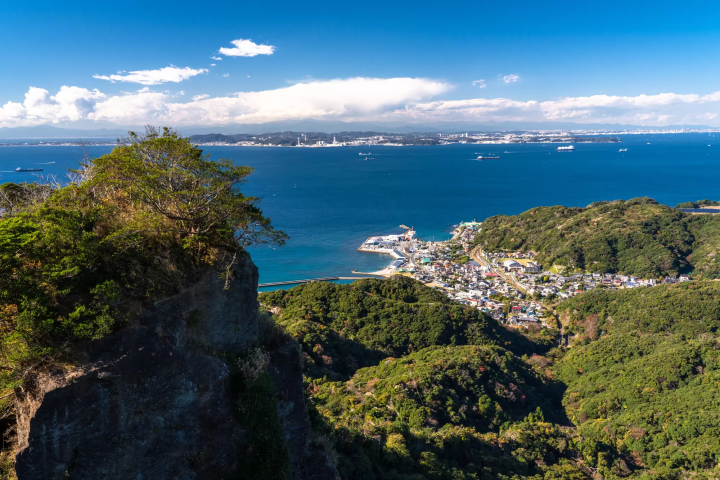
Photo by Pixta
Located in Chiba Prefecture, Mt. Nokogiri spans the areas of Kanaya and Kyonan Town. The mountain is named for its serrated ridge shape. Although it has a relatively low elevation of 329 meters, it is packed with attractions.
Along the hiking trails, you can find significant historical sights, such as the 100-meter tall “Hyakusha Kannon” (the Goddess of Mercy) and the over 31-meter Great Buddha, making it more than just a straightforward climb.
Ranked among the "100 Famous Mountains of the Kanto Region," it is beginner-friendly but has rocky areas and slippery paths. Therefore, wearing comfortable shoes or hiking boots is essential.
Read also
6. Mt. Tsukuba
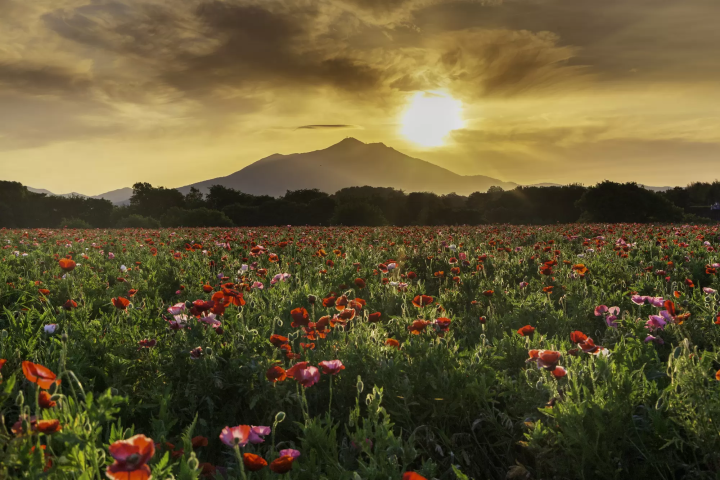
Photo by Pixta
Mt. Tsukuba, located in Tsukuba City, Ibaraki Prefecture, is 877 meters high and consists of two peaks: Mt. Nantai and Mt. Nyotai. Known as "the Fuji of the West and the Tsukuba of the East," it is also referred to as "Shiho" (Purple Peak) because the mountain's slopes change to purple at dawn and dusk.
It is recommended for those who want to enjoy the night view from a mountain recognized as a "Japanese Night View Heritage" spot. Various trails lead to the summit of Nantai, and the Mukeba Course and Hakubunbashi Course lead to the summit of Mt. Nyotai.
Some routes utilize a cable car or ropeway to reach the summit, making it accessible for beginners.
Read also
7. Mt. Kinpu
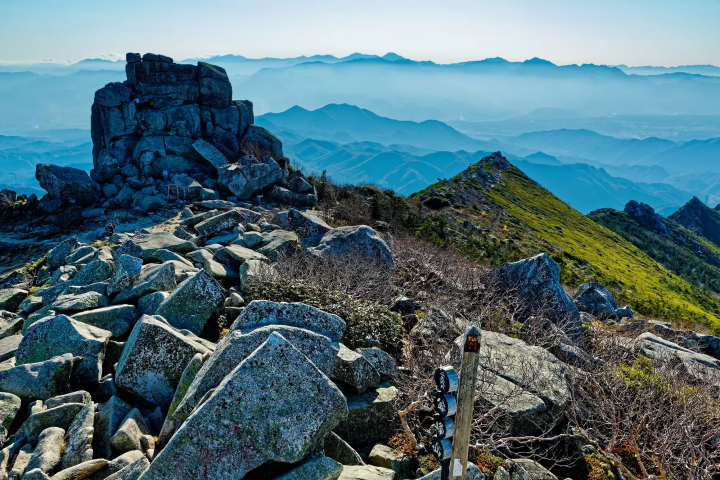
Photo by Pixta
Mt. Kinpu, straddling Kofu City and Hokuto City in Yamanashi Prefecture and Kawakami Village in Nagano Prefecture, is 2,599 meters high. The symbolic 15-meter-tall Gojo Rock stands majestically near the summit.
The view from the summit is stunning, and it is recommended for those looking to experience a sense of accomplishment. The course starting from the Odarumi Pass takes about 2.5 hours one way, making it suitable for beginners.
On the other hand, the course starting from Mizugaki Mountain Lodge takes approximately four hours and includes several chain sections (note), making it suitable for intermediate climbers.
Note: Chain sections refer to rocky areas where chains or ropes are installed for the safety of climbers.
The Highest and Most Famous Mountains in Japan: 8 Must-Visit Peaks
The following eight famous mountains have unique charms that are all worth visiting!
8. Mt. Fuji
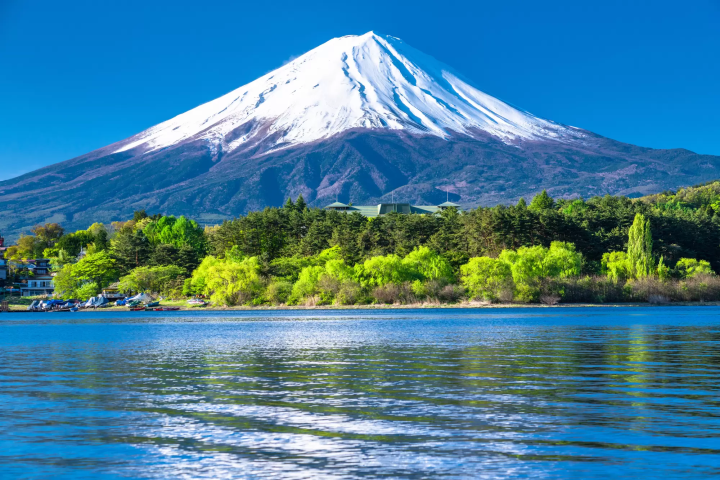
Photo by Pixta
Mt. Fuji is the highest mountain in Japan, standing at 3,776 meters and spanning Shizuoka and Yamanashi prefectures. Its beautiful shape and magnificent scenery are the main attractions, showcasing overwhelming natural beauty. On clear days, the view from the summit extends far and wide.
The Yoshida Trail from the Yamanashi side is recommended for beginners since it is relatively easy to climb and well-maintained. More challenging routes are available for advanced climbers, allowing hikers of various levels to enjoy an outdoor experience.
Climbing Mt. Fuji is a once-in-a-lifetime memory, so challenge yourself to make the ascent!
Read also
9. Mt. Haku
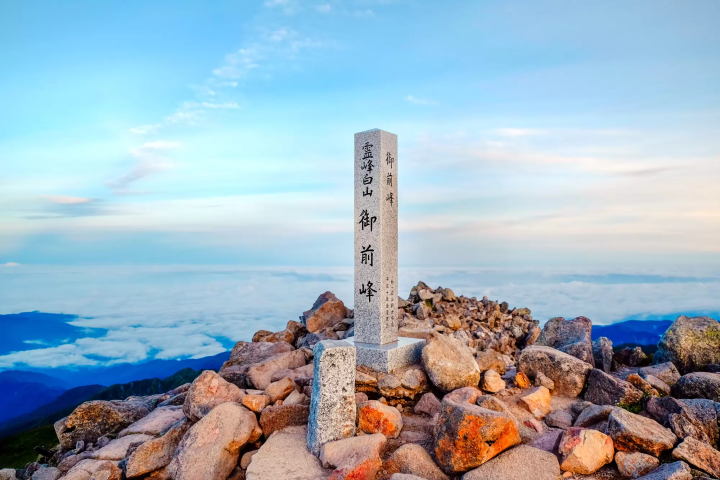
Photo by Pixta
Mt. Haku, with an elevation of 2,702 meters, spans Toyama, Ishikawa, Fukui, and Gifu prefectures.
Along with Mt. Fuji and Mt. Tate, Mt. Haku is known as one of Japan's three sacred mountains. Its greatest attraction is its abundant alpine flora and beautiful flower fields.
Many well-maintained trails make climbing relatively safe for beginners. The Sabo Shindo and Hirase routes are also safe for day hikes.
Enjoy flower-filled fields and natural scenery while relaxing and savoring your hiking experience.
10. Mt. Tate (Tateyama Mountain Range)
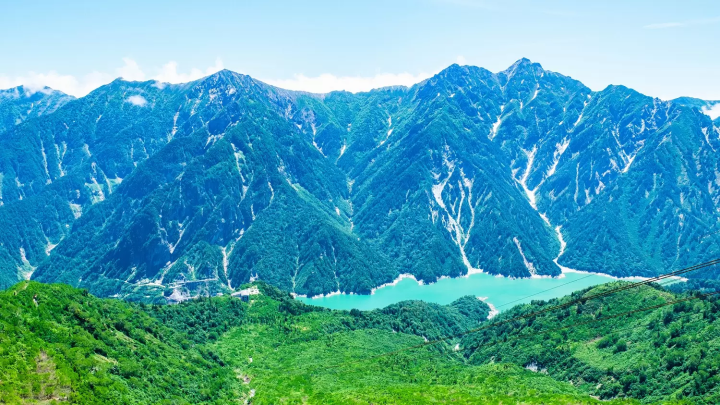
Photo by Pixta
Mt. Tate, better known as the Tateyama Mountain Range, is located in the eastern part of Toyama Prefecture, with an elevation of around 3,000 meters. It consists of three peaks: Oyama, Onanjiyama, and Fujinori Tate.
The main reason for climbing Mt. Tate is the Tateyama Kurobe Alpine Route, one of the world’s leading mountain routes connecting Toyama and Nagano prefectures.
This route is enjoyable for beginner to intermediate hikers. It offers five different modes of transportation, including cable cars and buses. It also allows you to explore natural spots and famous sites such as Shomyodaki Falls, Bijodaira, and the Kurobe Dam.
Additionally, the "Snow Walls" in April and May let you experience a wall of snow measuring over 20 meters high.
11. Mt. Asahidake
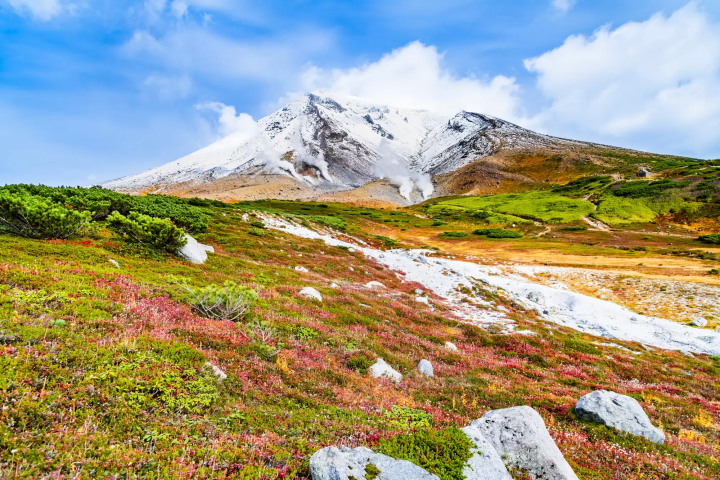
Photo by Pixta
Mt. Asahidake, at an elevation of 2,291 meters, is the highest mountain in Hokkaido. It is located almost in the island's center, and its diverse natural landscapes are a major attraction among visitors.
The climbing season is short, lasting from late June to early October. During this time, you can enjoy the vibrant alpine flora and the first snowfall, experiencing the changing face of nature across seasons.
Near the summit, the "mirror pond" beautifully reflects the mountain's peak on sunny days, making it a worthwhile visit. It is especially recommended for those who want to enjoy autumn foliage. The stunning colors are visible from mid-September, the earliest in the country.
You can head up to an elevation of 1,600 meters by ropeway, making it enjoyable for beginners.
12. Mt. Yotei
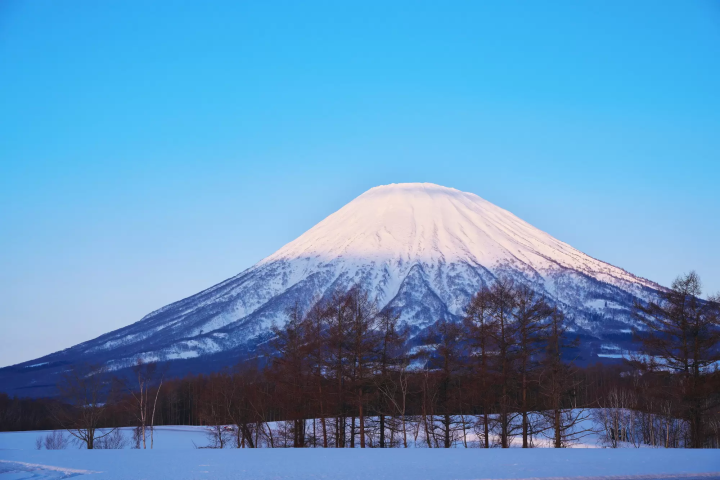
Photo by Pixta
Mt. Yotei, with an elevation of 1,898 meters, is located near Niseko, in the southwestern part of Hokkaido. Because it resembles Mt. Fuji, it is often referred to as "Ezo Fuji."
This mountain is recommended for those who enjoy bird watching and plant observation. It is home to over 130 species of wild birds and boasts around 100 varieties of alpine flowers blooming in the summer. From the summit, you can enjoy breathtaking views stretching all the way to the distant sea.
There are four hiking routes: Makari, Hirafu, Kyogoku, and Kimobetsu. Each is suitable for intermediate climbers, taking about 4 to 5 hours one way. While beginners can also attempt the ascent, they should be mindful of their physical fitness level.
13. Dewa Sanzan
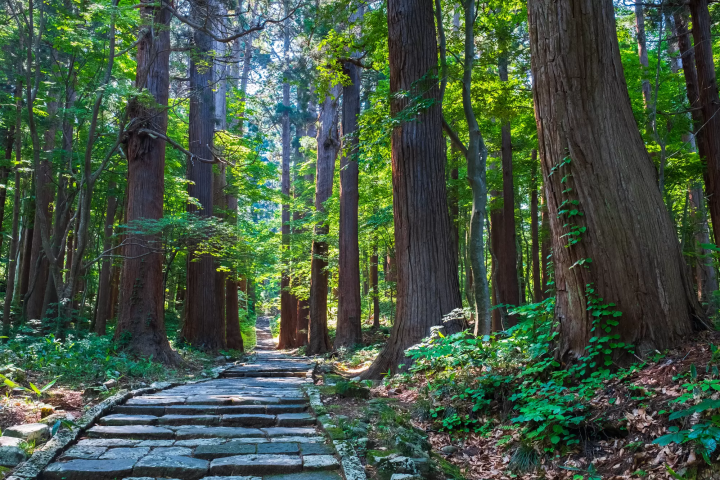
Photo by Pixta
Dewa Sanzan is a collective term for three mountains located in the central part of Yamagata Prefecture: Haguro (414 meters), Gassan (1,984 meters), and Yudono (1,504 meters).
Once revered as a mountain for *shugendo (a form of asceticism), it is recommended for those wishing to explore power spots. Haguro Mountain features 2,446 stone steps and the Sangijinja Shrine, showcasing its historical significance.
Gassan is known for its beautiful alpine flowers and virgin beech forests. Yudono Mountain remains a sacred site where yamabushi (ascetic priests) perform their training. While there is a Yudono Shrine at the summit, photography is prohibited.
The hiking course for Haguro Mountain is relatively beginner-friendly, while Gassan and Yudono Mountain are more suitable for intermediate climbers and above.
*Shugendo is a spiritual practice that involves rigorous training deep in the mountains to achieve enlightenment.
14. Mt. Aso
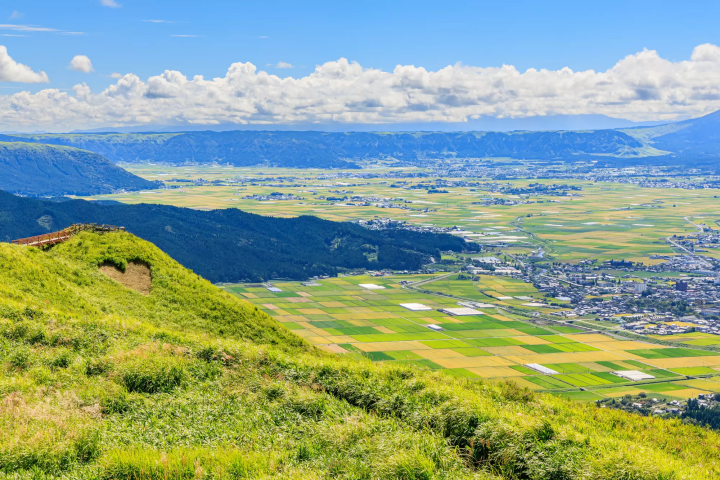
Photo by Pixta
With an elevation of 1,592 meters, Mt. Aso is located in the Aso region of Kumamoto Prefecture. It is a mountain range centered around the Aso Five Peaks: Takadake, Nakadake, Nekodake, Kishimadake, and Eboshidake.
The greatest attraction of Mt. Aso is having one of the largest calderas in the world. Additionally, near the summit of Takadake, you can see beautiful clusters of Miyama-Kirishima, a flower that blooms only in Kyushu, from late May to early June.
For beginner climbers, Kishimadake and Eboshidake are ideal due to their shorter distances and minimal elevation changes.
Read also
15. Mt. Daisen
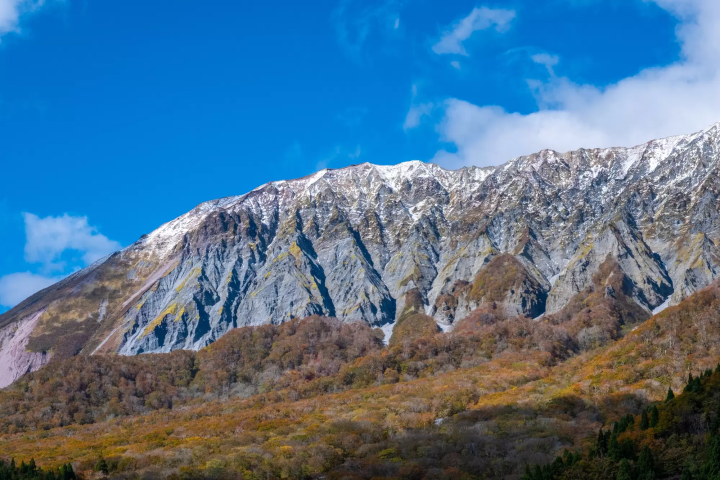
Photo by Pixta
Mt. Daisen, standing at an elevation of 1,709 meters, is located in the southern part of Tottori Prefecture. It has even been ranked third among Japan's famous peaks.
Also known as Hoki Fuji and Izumo Fuji, it has been revered as a sacred mountain since ancient times.
It is especially recommended for those wishing to observe rare plants. It features one of Japan's largest beech virgin forests and plants, which are designated as special natural monuments.
The Summer Mountain Trail is suitable for beginners, while the Utopia Course is recommended for intermediate and advanced climbers.
Experience Japan's Great Outdoors by Climbing Its Famous Mountains
The "100 Famous Mountains of Japan" were selected based on the mountains' quality, history, and uniqueness.
These notable peaks offer enjoyment for climbers of all levels and are highly valued by outdoor enthusiasts. Please enjoy mountain climbing while referencing Japan's famous mountains introduced in this article.
Written by Kakutama Editorial Team
This is the official account of MATCHA's editorial department. Our articles feature useful travel information for visitors to Japan, from how-to guides to recommended places to visit.













































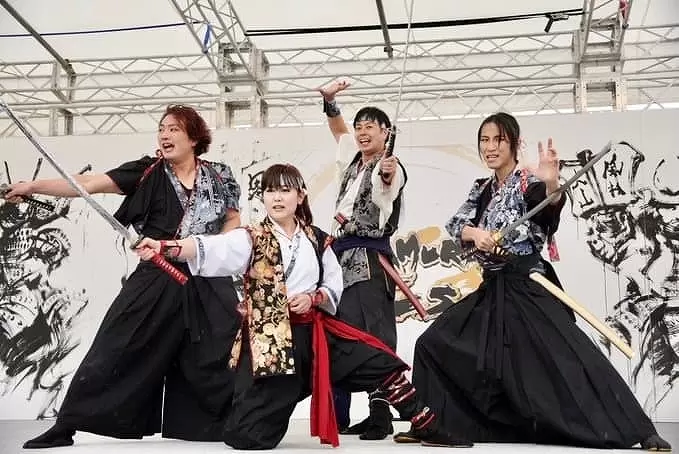












![[2026] Top 5 Strawberry Picking Spots in Tokushima, Naruto| Farms and Access Guide for January to May](https://resources.matcha-jp.com/resize/720x2000/2025/03/06-227165.webp)
